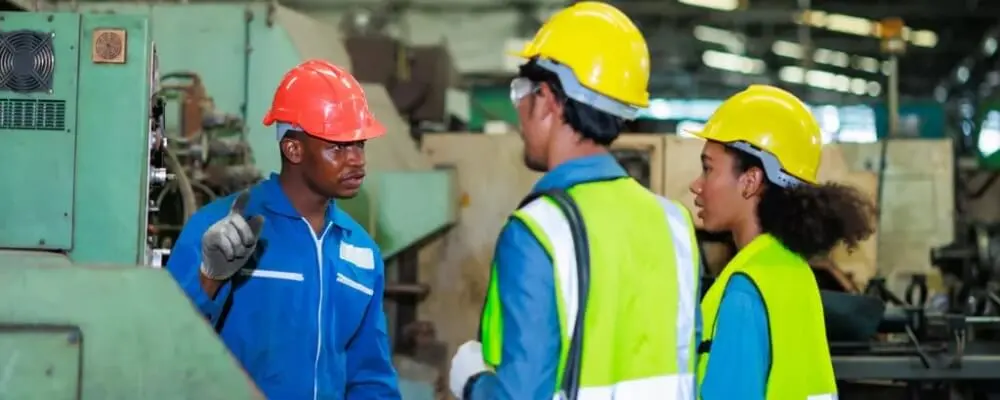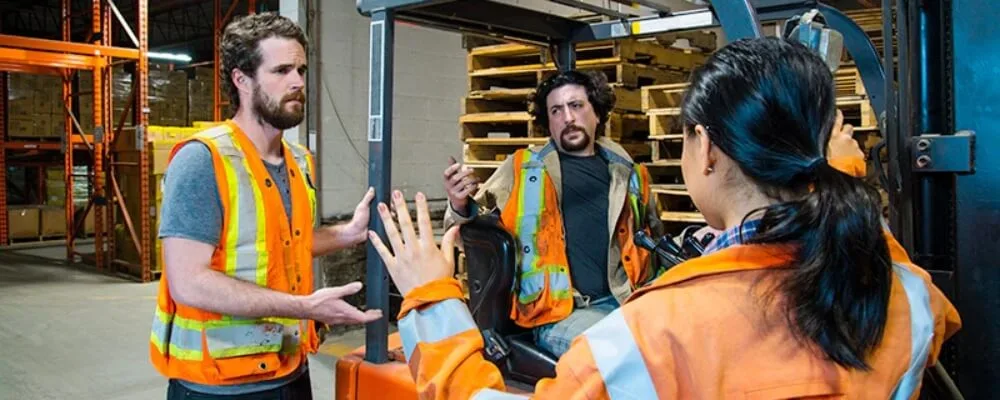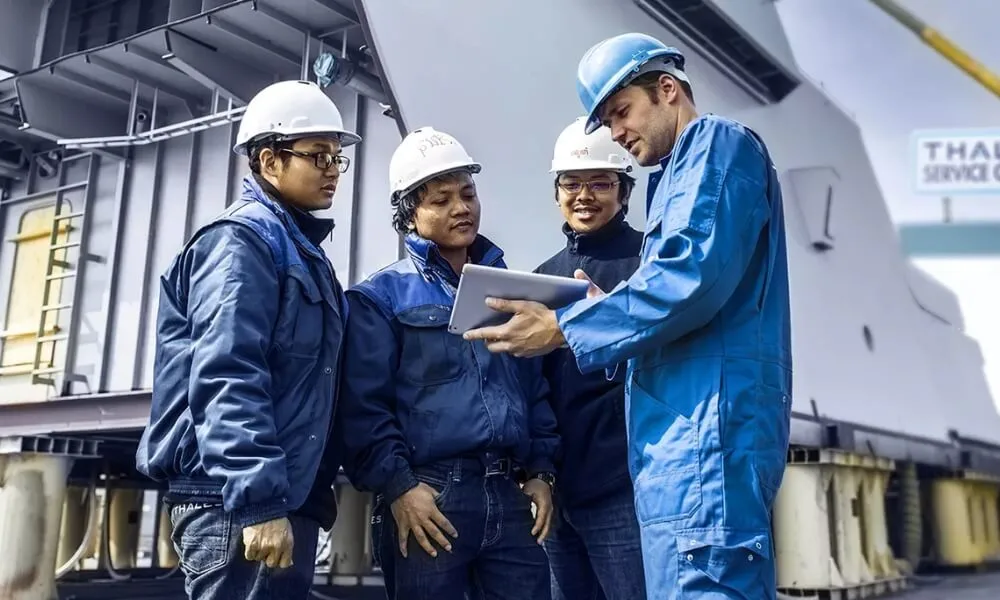In today’s dynamic and ever-evolving workplace environment, ensuring safety and efficiency isn’t just about following written protocols. It fosters a deep, ingrained understanding of one’s immediate and extended surroundings. This concept, known as situational awareness, is pivotal in preventing mishaps and ensuring seamless operations, regardless of the industry.
In this blog post, we will delve into the importance of this cognitive skill, shedding light on practical tips to enhance it and illustrating real-world examples of its application. Whether you’re a business leader, a manager, or an employee striving to create a safer and more efficient workplace, this guide offers insights that can make a difference.
What is Situational Awareness?
Situational awareness refers to perceiving, understanding, and predicting the current environment and its dynamics. It involves recognizing and interpreting relevant information from one’s surroundings, understanding the implications of those details, and forecasting future changes or potential risks. This concept is crucial in fields where real-time decision-making, such as aviation, military operations, and emergency response, can have significant consequences.
At its core, situational awareness combines the processes of observation, comprehension, and projection. It requires individuals to constantly scan their environment, process the information they gather, and make informed decisions based on their understanding of the present and future predictions. A high level of situational awareness can lead to better decision-making, while a lack thereof can result in errors, oversights, or accidents.

Situational Awareness in the Workplace
In the workplace, situational awareness refers to an individual’s ability to recognize and understand the various elements, events, and dynamics of their work environment, especially those that could impact safety and performance. It encompasses an awareness of potential hazards, an understanding of how these hazards might interact or change over time, and the ability to make informed decisions to mitigate risks or respond appropriately to unforeseen events.
Having situational awareness in a work setting means being attuned to the physical environment, the actions and behaviors of colleagues, and the overall flow of operations. Whether in an office setting, on a construction site, or within a manufacturing plant, maintaining heightened situational awareness ensures that potential problems can be identified early and addressed, leading to a safer, more efficient work environment.
Examples Of Situational Awareness In The Workplace
Situational awareness in the workplace manifests in numerous ways, depending on the specific work environment and the tasks being performed. Here are some examples:
- Manufacturing Floor: An operator notices a machine making an unusual noise or vibrating differently. Recognizing this as abnormal, they stop the machine and call for maintenance, preventing potential malfunction or injury.
- Office Setting: During a busy day, an employee overhears a colleague saying they feel overwhelmed with project deadlines. Recognizing potential errors due to stress, they offer assistance or suggest the colleague speak with a supervisor about reprioritizing tasks.
- Construction Site: A construction worker sees a storm approaching while working at a height. Aware of the dangers of working in such conditions, they signal their team to secure equipment and seek shelter.
- Warehouse: A forklift operator notices a spill on the floor. Instead of driving over or around it, they stop their work, alert colleagues, and ensure the spill is cleaned up to prevent potential accidents.
- Retail Environment: A store manager spots a customer acting suspiciously and possibly shoplifting. Instead of confronting the individual directly, they use their training to approach the situation tactfully, possibly by asking if the customer needs assistance while alerting security.
- Hospital or Clinic: A nurse double-checks the patient’s details while administering medication and realizes discrepancies between the prescribed dosage and the patient’s records. By being observant and cross-referencing, they prevent a potential medication error.
- Kitchen or Restaurant: A chef notices that a gas burner hasn’t ignited properly and smells gas. Recognizing the immediate danger, they shut off the gas source and ensured the area was ventilated.
- Open-Plan Office: An employee sees a coworker frequently looking around, appearing lost or unsure. Recognizing this, they approach the coworker to offer guidance or help them find whom or what they’re looking for.
These examples underscore the importance of being tuned into one’s surroundings, understanding the implications of what’s observed, and taking appropriate actions to ensure safety and efficiency.

10 Effective Tips To Improve Situational Awareness In The Workplace
Improving situational awareness in the workplace is crucial for maintaining safety, productivity, and effective decision-making. Here are ten effective tips to help you enhance situational awareness:
1. Regular Training
Training is the foundation of a safe workplace. Consistent training ensures that employees are aware of and equipped to address potential risks. Training can become more engaging and relatable by incorporating real-life scenarios and simulations. This hands-on approach allows employees to practice their responses in a controlled environment, preparing them to act swiftly and effectively.
2. Encourage Communication
A culture of open communication is essential for maintaining situational awareness. Potential risks can be identified earlier when employees feel safe and encouraged to share observations or voice concerns. This collective vigilance ensures a collaborative approach to safety, where every member actively participates in preventing accidents and mishaps.
3. Routine Safety Audits
Proactive measures are always more effective than reactive ones. Safety audits serve as a regular check-up for the workplace, ensuring all safety protocols are adhered to. By systematically reviewing processes, equipment, and facilities, overlooked hazards can be identified and rectified, ensuring the environment remains conducive to safe operations.
4. Limit Distractions
In today’s digital age, distractions are omnipresent. However, in a work setting, these distractions can prove hazardous. By minimizing non-essential interruptions and promoting focused work, employees can remain more alert to their surroundings. For example, designating specific zones where personal devices are discouraged can help maintain a high concentration level, especially in critical operations.
5. Visual Cues and Signage
Visual reminders play a crucial role in maintaining situational awareness. Clear signs, labels, and markers immediately remind us of potential hazards. Whether it’s a wet floor sign or a label on hazardous material, these visual cues ensure that employees remain informed and cautious.

6. Stay Updated with Technology
As technology advances, it offers new solutions for enhancing safety. Modern tech, like CCTV cameras, can provide a bird’s eye view of operations. In contrast, wearable devices can offer real-time data on environmental conditions or employee vitals. By staying updated and integrating these solutions, workplaces can have an additional layer of safety monitoring.
7. Promote Physical and Mental Well-being
A well-rested, stress-free employee is more alert and aware. Encouraging regular breaks ensures that fatigue doesn’t set in, which can significantly deter situational awareness. Spaces for relaxation or short, brisk walks can prove invaluable in refreshing an employee’s mind and body.
8. Encourage Peer Checks
There’s strength in numbers. Promoting a culture where coworkers look out for one another ensures that potential oversights are quickly noticed and addressed. Especially in high-risk environments, this buddy system acts as a safety net, preventing minor oversights from escalating into major incidents.
9. Stay Updated with Current Events
External factors, like weather conditions or market fluctuations, can impact workplace operations. Keeping employees informed about these events ensures they can prepare and adapt accordingly. For example, a construction site forewarned about an upcoming storm can take measures to secure equipment and ensure the crew’s safety.
10. Feedback and Continuous Improvement
Lastly, the journey to a safe workplace is continuous. Employees can voice their opinions on existing safety protocols and suggest improvements by establishing a feedback mechanism. This iterative approach ensures that the workplace’s safety measures evolve, adapt, and improve over time, always staying a step ahead of potential hazards.
Conclusion
Situational awareness is more than just a buzzword; it’s a fundamental skill that can mean the difference between a thriving, safe workplace and one plagued with unnecessary risks and inefficiencies. As explored in this blog, understanding and mastering this skill can significantly benefit individuals and organizations, from reducing accidents to promoting more harmonious teamwork.
Through the practical tips and real-life examples, it’s evident that fostering a culture of situational awareness is an investment in the well-being and productivity of any workplace. As we navigate the complexities of modern work environments, let’s prioritize being present, observant, and proactive, ensuring not only our safety but also the success of our endeavors.

